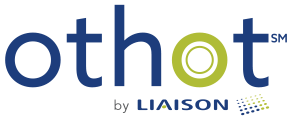Othot and Arizona State University: Optimizing Recruitment Strategy with Platform Insight
Blake Slyter
In the world of higher education recruitment strategy, institutions often measure initiative success by the net number of new students gained over previous terms — especially if this means there has been an increase in students who persist, an increase in the number of high academic achievers, or even an increase in rankings as a result of an enrolled class. Colleges and universities need confirmation that their strategies are effective. They want to know that dollars spent on events, staff, marketing, vendors, and recruitment projects are paying off.
Similarly, when it comes to predictive and prescriptive modeling used for recruitment, it is common practice to frame model influence and success solely from the perspective of enrollment growth. However, the reasons a student chooses to attend an institution are not always straightforward or quantitatively measurable.
While correlations can certainly be made between platform insight and individual progression points, the models may not fully account for abstract and influential variables such as informal meetings with recruitment officers, conversations with peers, parental guidance, institution reputation, traffic and parking around campus, or even weather at the time of an event. Trying to create a direct link between platform insight and the total number of enrolled students can involve inadvertent assumptions.
 Blake Slyter, ASU Enrollment Strategy Analyst
Blake Slyter, ASU Enrollment Strategy Analyst
At Arizona State University (ASU), we understand and appreciate the nuance of a student’s journey to college. We know that every student is different. While our Othot models certainly help us better understand variables that strongly correlate with enrollment, the platform goes a step further to answer questions that actively shape recruitment strategies at each stage of the enrollment funnel.
Knowing that our models do not account for every possible influencing variable, model success is best understood operationally — within the context of reduced expenditures and time saved.
Othot has built multiple recruitment models for ASU’s first-time, domestic, campus immersion population. Models have been created for each funnel stage, as well as for our resident and nonresident markets. Given the unique characteristics and expectations of each funnel stage and market, our leads and prospects are inherently low scoring whereas our applicants, admitted students, and deposited students have a diverse spread of scores. As a result, Othot has employed the use of deciles to create a relative score ranking (1-10) across all models where 1 is high scoring and 10 is low scoring.
At the lead and prospect level, we use decile to help segment communication campaigns and determine which individuals will receive printed mailers. This includes recruitment magazines, postcards, and viewbooks. ASU defines “leads” as high school students who have not yet expressed interest in attending ASU; names of leads are often purchased from third-party vendors based on past enrollment trends in specific states and regions, surveyed interests, and general academic profile. ASU defines “prospects” as inquiries — students who have expressed interest in ASU, requested information or responded to a previous marketing effort. Because our lead pool is significantly larger than our enrolled pool, our lead models predict to the admitted stage of the funnel; all other models predict to the enrolled stage.
Historically, lead and prospect recruitment material has been sent to audiences segmented by ACT or SAT score ranges in order to ensure that recipients are fully admissible. While ASU is test optional, test scores give us a good understanding of academic caliber before GPA is reported. In addition to test scores, regional market is also considered, with preference given to our priority and secondary markets.
Unfortunately, relying on these criteria has not always permitted us to adhere to piece count limits. To help mitigate this problem, ASU built a logistic regression model to add a predictive score to our audience criteria. Along with using basic student biodemographic variables, the lead-level model leveraged data from College Board to help target high school students most likely to respond.
Following in the footsteps of this exercise, Othot has allowed us to do the following:
- Extend the prediction to all stages of the enrollment funnel
- Incorporate data from US Census (and College Board)
- Link variables between stages
- Add model prescriptions and sensitivity analyses
- Employ a different statistical approach via applicable algorithms
Additionally, Othot’s insights allow us to better understand the statistical weight of variables like nonresident affordability and on-campus events early in a student’s college-bound journey.
To give a better idea of how Othot has helped us, consider a target group of 150,000 leads and prospects for fall 2019. Group A — composed of 75,000 rising seniors who previously met our SAT or ACT segment requirements — was sent a recruitment magazine in August 2018. Group B — also composed of 75,000 rising seniors who previously meet our SAT or ACT segment requirements and had an Othot decile of 1, 2, 3, 4 or 5 — was sent the same recruitment magazine.
Generally speaking, recipients of the magazine from both groups had a higher application completion rate and yield rate than leads and prospects who did not receive the magazine. When including decile, however, we saw marked improvement in four chief areas compared to using the test score segment alone:
- 6% more leads responded
- 14% more applications were completed
- 25% more students enrolled
- There was a 27% increase in net tuition revenue
To be clear, the recruitment magazine was sent to all qualifying records based on comprehensive selection criteria, including decile. These results were derived from the full audience.
We cannot conclude that a magazine is the deciding factor in a student’s decision to respond, apply, and enroll at ASU. Othot’s top deciles help to target leads already likely to be admitted and prospects already likely to enroll based on what we know of each record at that stage, and this, in turn, helps us ensure that marketing dollars are not wasted on individuals unlikely to progress through the funnel, even if they are admissible and live in a priority market. In other words, the magazine serves as a push to the next step for these students.
Though it would make sense to focus our outbound attention on mid-range scores or “on the fence” students further down the funnel, it’s important to note that top-scoring deciles do not carry the same statistical certainty for leads and prospects that they do for admits and deposits, but they still allow us to prioritize our audience lists with confidence.
Apart from using decile to influence mail-piece audience for leads and prospects, Othot’s prescriptive capabilities have helped us refine institutional aid strategy. More specifically, Othot’s matrix optimization and sensitivity analysis features have prescribed the best course of action for reducing our overall expenditures while optimizing enrollment; this has been especially vital as ASU has enrolled its largest class yet — including a large number of high achieving, scholarship-eligible students.
After testing various aid strategy scenarios segmented by academic caliber and market, we found we could adjust elements of our strategy by as much as 30 percent without impeding expected growth. While it is too soon to measure results from this exercise, we are assured that Othot’s prescriptions will help maintain future growth despite any potential budget constraints. Operationally speaking, success will be measured by increased net tuition revenue through relevant decreased spending.
Additionally, we have leveraged Othot’s prescriptive analytics to determine which students would most benefit from attending an on-campus event. Using Othot’s what-if feature, “benefit” is measured by individuals who see the largest positive change to their likelihood-to-enroll score after attending a specific event, hypothetically speaking. In many cases, the delta is large enough to suggest that the event is a paramount deciding factor in a student’s decision to enroll at ASU.
This insight is especially useful for driving event invitation campaigns, creating call lists, informing recruiter follow-up activities, or even creating fly-out lists. Without question, the what-if feature helps us to save time and resources, as it allows us to prioritize our efforts based on the statistical impact of each event for groups of students or even individual students.
In knowing that a student’s decision to enroll is nuanced and multifaceted, ASU defines the success of its partnership with Othot through the optimization of our recruitment operations as driven by platform insight. In other words, we know that while our models do not cause automatic enrollment behavior, they inform our enrollment strategy through tested and established correlations.
At the lead and prospect stage, this has allowed us to focus on attracting individuals who have the highest potential of progressing to the next stage of the funnel, based on the respective dependent variables of “admitted” or “enrolled.” Further down the funnel, this has allowed us to use platform prescriptions to drive aid strategy and inform event participation.
Going forward, we plan to include new data elements within our models, such as inbound source and outbound marketing variables, and we plan to leverage these enhancements to influence our search name purchase strategy, with the goal of reduced costs, as well as fine-tune our automated marketing sends so that emails sent to students are as impactful as possible.
Blake Slyter is guest author and Enrollment Strategy Analyst at Arizona State University.
Blake Slyter



